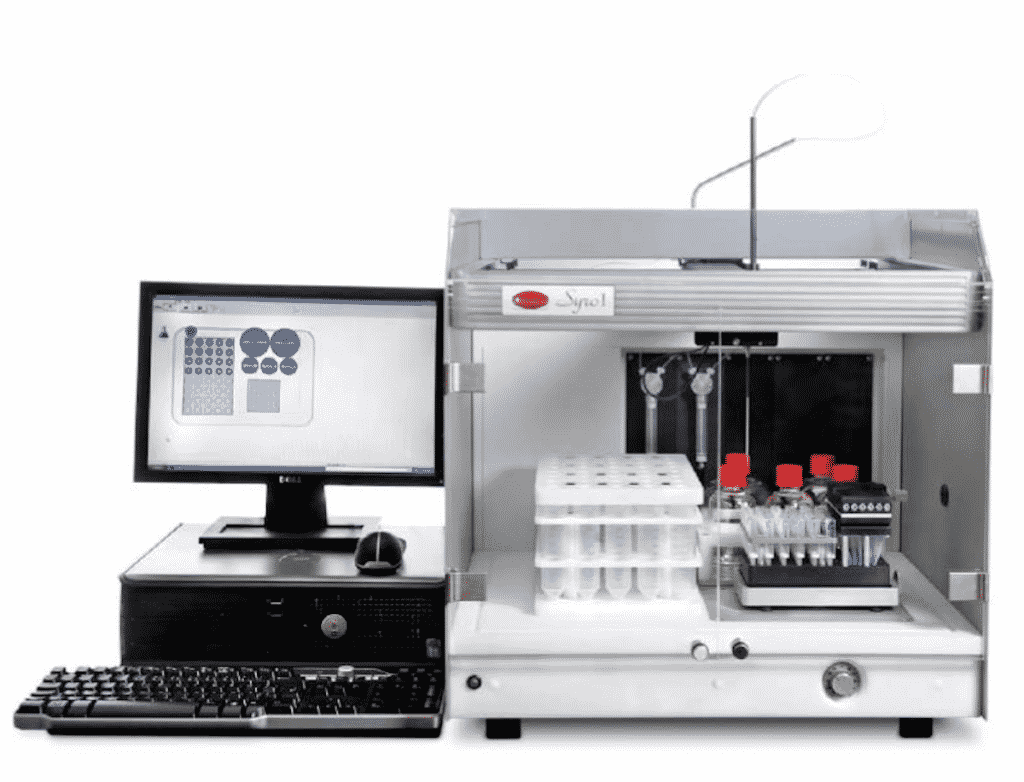Peptide purification typically requires the use of a HPLC (high-performance liquid chromatography) method. You might not believe this, but the best way to purify synthetic peptides is actually throughreversed-phase HPLC.
Granted, you might be sceptical about this. And no one could blame you. After all, using reversed-phase HPLC to purify peptides goes directly against what you’ve been taught in school.
It’s true, though. And this entry is going to show you why.
HPLC Requires Babysitting
You may have found your ideal HPLC technique, and you probably love it. You’ve also learned all the tricks and quirks that help you come up with the purest possible peptides. Even if you love doing your favourite HPLC process, one thing is for sure – it takes time, and it takes a lot of supervision.
In most cases, any HPLC technique requires spending an entire weekend at the machine. Even with the most advanced technology, you’re still going to have to topoff the mobile phase solvents, empty the waste containers, and perform various other maintenance tasks.
Is this necessary? Well, with regular HPLC, regardless of the method, it is. With reversed-phase HPLC, things are different.
Addressing the Basic Questions
When introducing a brand-new technique to a process, questions are naturally raised. After all, the reversed-phase HPLC isn’t a popular solution for peptide purification. Here are the main questions that immediately arise.
How Different Is the New Process?
Reversed-phase HPLC (flash chromatography) is completely different from standard HPLC techniques. For one, the size of the stationary phase particle is bigger, which causes high resolution compromise. On the other hand, the larger the particles, the bigger the sample loading capacity.
This means that the process can be used in two purification types.
One is aimed at crude peptides that contain high levels of purity. The high loading capacity diminishes the total time needed for purification, plus you avoid wear and tear on the expensive HPLC columns.
The other purification type involves cleaning up the crude peptides and HPLC polishing. Yes, performing purification twice doesn’t sound great. Still, the total time required for this type of peptide purification is shorter than with the regular HPLC method.
With flash chromatography, you get to load up the whole synthesis for one purification effort. In turn, this will significantly improve the final purity of the end product.
Can the Peptides Reach a Purity Larger Than 95%?
With standard HPLC, you can expect purity that’s greater than 95%. This is very important.But can reversed-phase HPLC reach these purity levels?
Yes!You can reach 95% purity or morewith a single injection and a flash cartridge, and without significant changes to the norm. You may have to think outside the box, but you are working with peptides – that’s how they are.
How Much Peptide Gets Stuck on This Column?
Highly pure peptides and high sample loadsmean no prep HPLC, and this saves a lot of time. When put side-by-side, flash chromatography and prep HPLC give the same results.Therefore, you don’t get additional peptide stuck on the column, but you do get almost identical purity, similar sample recovery, and a quicker process, at that.
Yes, the reversed-phase HPLC method is very much superior to the regular HPLC methods.
Should You Go with the New Technique?
If you are perfectly satisfied with your current HPLC technique, you might disregard all the benefits that the reversed-phase HPLC method brings to the table. This is natural. Even though HPLC requires babysitting and takes longer, you won’t mind.
But rest assured that, once you’ve given the reversed-phase HPLC a go, you’ll forget about the regular HPLC altogether, at least when it comes to peptide purification.
Besides, you won’t always have enough time to deal with purifying peptides slowly and patiently. At the end of the day, this process is a means to an end.
Embrace Innovation
As a biochemist, you need to keep up with the latest trends if you want to become better at what you do. Yes, you’ve been taught to always stick to regular HPLC when purifying peptides, but you need to keep an open mind. Sometimes, the textbooks are wrong. And things change over time. The reversed-phase HPLC technique will eventually get to the top of the peptide purification food chain. The sooner you get into it, the better off you’ll be.
